Topics
Category
Era
Split Rock Lighthouse
Split Rock Lighthouse opened in the summer of 1910 to guide bulk ore ships sailing near Lake Superior's rocky coast. By 1940, its picturesque North Shore setting had made it one of the most visited lighthouses in the United States.
In the early years of the twentieth century, iron ore shipments on Lake Superior doubled and redoubled. United States Steel's bulk ore carriers became "the greatest exclusive freight-carrying fleet sailing under one ownership in the world." The demand for a new lighthouse on the lake's inhospitable North Shore was hardly surprising.
A single storm on November 28, 1905 damaged twenty-nine ships. One-third of them were the uninsured property of the steel company fleet. Two of these carriers foundered on the rocky coastline, in an area which some called "the most dangerous piece of water in the world." A delegation led by the steamship company president descended upon Washington, D.C. In early 1907, Congress appropriated $75,000 for a lighthouse and fog signal in the vicinity of Split Rock.
The construction of Split Rock Lighthouse was an engineering feat carried out by an organization already known for building structures in remote locations. The Duluth construction firm of L. D. Campbell & Son supplied all the labor necessary: carpenters; brick masons; demolition men for dynamiting the hard rock of the cliff to build foundations; and laborers collected from all over the Great Lakes region.
The first challenge in the spring of 1909 was to erect a steam-powered hoist and derrick for lifting supplies off the boats on the lake, more than 110 feet below. A construction crew of thirty-five to fifty men was supplied by boat throughout the construction period.
By the time Split Rock Light Station was completed, workers had spent thirteen months on the desolate cliff, with a break only during the worst months of winter. The light was lit on July 31, 1910.
When the first keepers arrived at Split Rock in the summer of 1910, it was a remote and barren place. The few trees that grew on the cliff top had been cut down during construction, so the wind howled constantly.
Because the station was isolated by the lake and had no land access, supplies and visitors could come only by boat. Their visits proved to be infrequent. Getting to the lighthouse was so difficult in those early years that many families of the keepers would come only for short visits, leaving for their winter homes when school started. They were joined by the keepers when the station was decommissioned for the annual winter shutdown in December.
In 1924, Lake Superior International Highway was built along the North Shore. It eventually linked all of the shoreline from Duluth to Canada. The highway made it easier for supplies, visitors, and keepers' wives and children to get to the lighthouse.
By the 1930s, the keepers were living with their families at the station through the winter layoff. Children boarded buses for school in Beaver Bay and Two Harbors. Keepers found it necessary to ask the Lighthouse Service headquarters for guidance on how to work amid the influx of visitors. It also became necessary to erect safety fences along the cliff's edge.
The keepers' tools changed as well. Kerosene lamps and gasoline-powered fog horns gave way to electric lights and compressors. The basic job, however, remained the same: round-the-clock manning of the navigational equipment. Maintenance still occupied most of the keepers' days, and they could look forward to spending only a supper and maybe a quiet evening with their families before the night watches started.
The station closed in 1969 when modern navigational equipment (including radar and LORAN, or long range navigation) made it obsolete. The State of Minnesota obtained the scenic landmark in 1971, and afterward, the Minnesota Department of Natural Resources began operating Split Rock Lighthouse State Park, a 2,200-acre site offering hiking, picnicking, and tent camping to visitors. In 1976, the Minnesota Historical Society added Split Rock Lighthouse to its network of historic sites.
Bibliography
Hall, Stephen P. Split Rock: Epoch of a Lighthouse. Minnesota Historic Sites pamphlet series, no. 15. St. Paul: Minnesota Historical Society, 1978.
Related Resources
Primary
I.401
Split Rock Lighthouse Photograph Collection, c.1911–1945
Visual Collection, Minnesota Historical Society, St. Paul
Description: Photographs and copy prints taken by keeper Franklin J. Covell during his tenure at Split Rock Lighthouse.
M669
Split Rock Lighthouse Records, 1910–1967
Manuscript Collection, Minnesota Historical Society, St. Paul
Description: Records kept by Lighthouse keepers.
P1138-7
Tinkham, Ralph Russell. The Building of Split Rock Light Station, Minnesota. Typesrcipt, [1959].
Manuscript Collection, Minnesota Historical Society, St. Paul
Description: A brief typed report of the building of Split Rock Lighthouse.
Secondary
Architectural Resources Inc. A Master Plan for Split Rock Lighthouse Historic Site. St. Paul: Minnesota Historical Society, [1977?].
Berger, Todd R. Lighthouses of the Great Lakes: Your Guide to the Region's Historic Lighthouses. Stillwater, MN: Voyageur Press, 2010.
Dregni, Eric. Minnesota Marvels: Roadside Attractions in the Land of Lakes. Minneapolis: University of Minnesota Press, 2001.
Harrison, Tim, and Ray Jones. The Golden Age of American Lighthouses: A Nostalgic Look at U.S. Lights from 1850 to 1939. Lighthouse series. Guilford, CT: Globe Pequot Press, 2002.
Holland, Francis Ross Jr. America's Lighthouses: An Illustrated History. New York: Courier Dover Publications, 1988.
Hyde, Charles K. The Northern Lights: Lighthouses of the Upper Great Lakes. Detroit, MI: Wayne State University Press, 1995.
O'Hara, Megan. Lighthouse: Living in a Great Lakes Lighthouse, 1910 to 1940. Mankato, MN: Blue Earth Books, 1998.
Oleszewski, Wes. Great Lakes Lighthouses: American and Canadian. Gwinn, MI: Avery Color Studios, 2011.
Penrose, Laurie. A Traveler's Guide to 116 Western Great Lakes Lighthouses. Davison, MI: Friede Publications, 1995.
Roberts, Bruce, and Ray Jones. Western Great Lakes Lighthouses: Michigan and Superior. Old Saybrook, CT: Globe Pequot, 2001.
Roberts, Mike. The Last Keeper at Split Rock. St. Cloud, MN: North Star Press of St. Cloud Inc., 2010.
Sandvik, Glenn. A Superior Beacon: a Brief History of Split Rock Lighthouse. [Two Harbors, MN: Sandvik, 1972].
United States Coast Guard. Historically Famous Lighthouses. [Washington D.C.: U.S. Coastguard Public Information Division, 1972].
Videotape #B-74
Split Rock Light: Tribute to the Age of Steel. Fresh Pictures Inc. St. Paul: Minnesota Historical Society, 1986.
Web
Minnesota Historical Society. National Register, Split Rock Lighthouse.
http://www.mnhs.org/preserve/nrhp/NRDetails.cfm-NPSNum=69000073.html
Minnesota Historical Society. Split Rock Lighthouse, History.
http://sites.mnhs.org/historic-sites/split-rock-lighthouse/history
Related Audio
MN90: The Lure of the Lighthouse
All rights reserved
Holding Location
More Information
Articles
MN90: The Lighthouse Keeper's Mistake
All rights reserved
Holding Location
More Information
Articles
Related Images
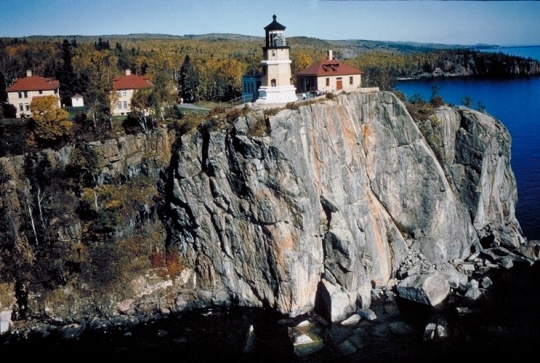
Split Rock Lighthouse
Public domain
Articles
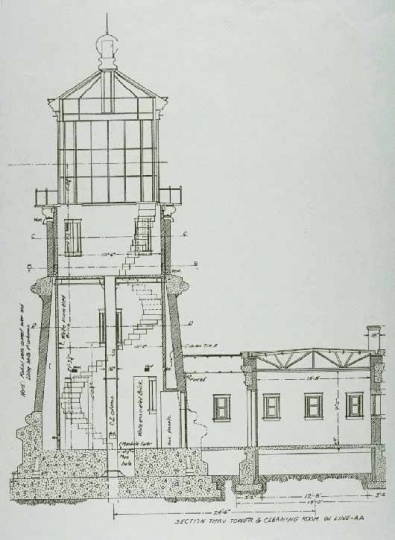
Split Rock tower blueprint
Public domain
Holding Location
Articles
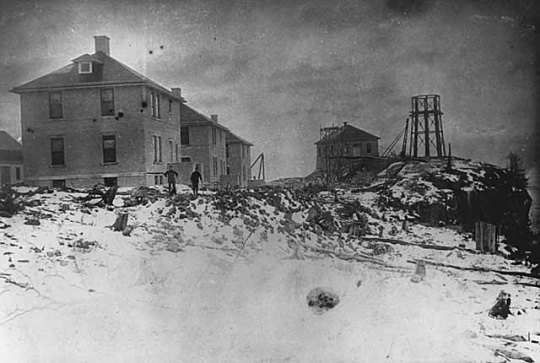
Split Rock Lighthouse under construction
Public domain
Holding Location
Articles
More Information
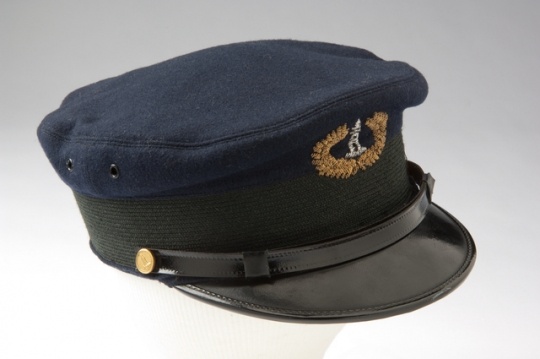
U.S. Light House Service uniform hat
All rights reserved
Holding Location
Articles
More Information
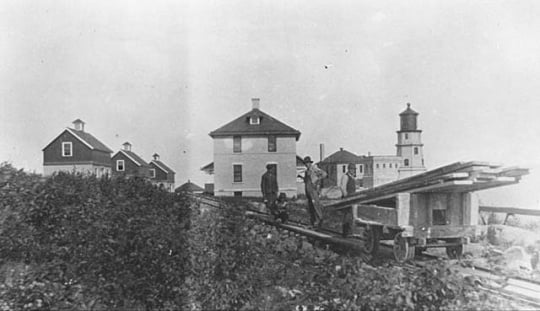
Split Rock Light Station and Tram Car
Public domain
Holding Location
Articles
More Information
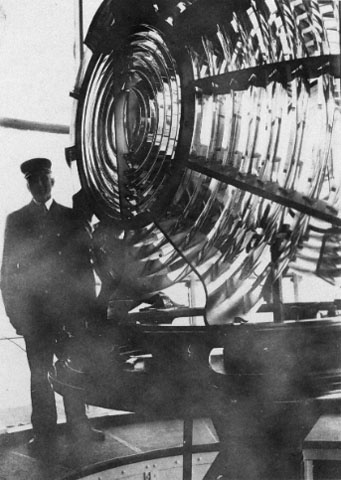
Franklin J. Covell by the Split Rock Lighthouse lens
Public domain
Holding Location
Articles
More Information
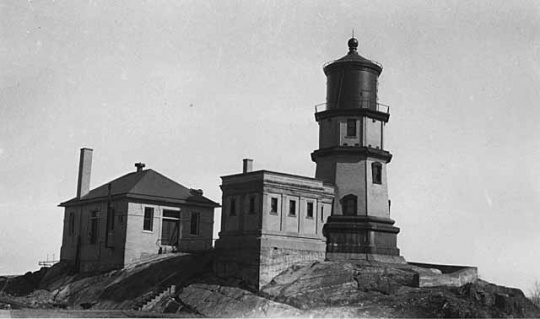
Split Rock Station c.1930
Holding Location
Articles
More Information
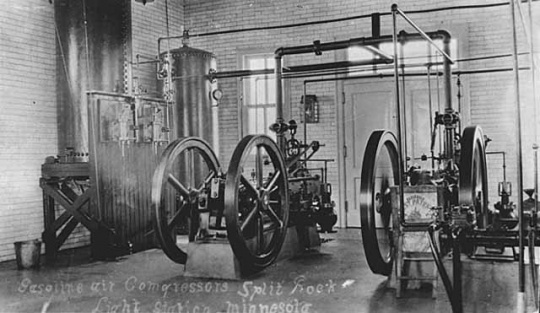
Fog signal equipment at Split Rock Lighthouse
Holding Location
Articles
More Information
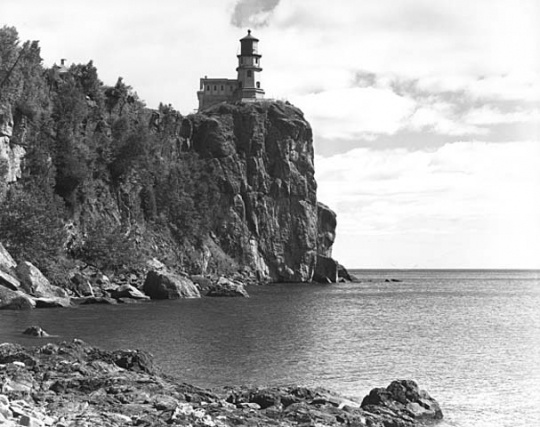
Split Rock Lighthouse
Holding Location
Articles
More Information
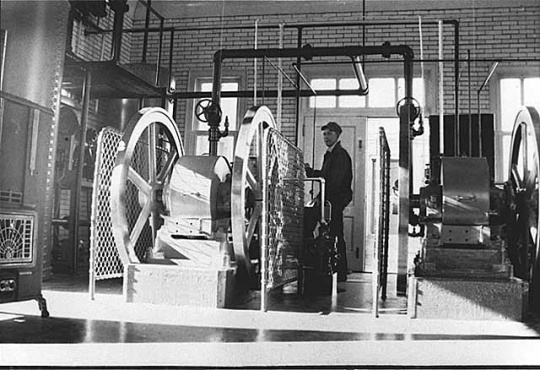
Tom Hassing at Split Rock Lighthouse
Holding Location
Articles
More Information
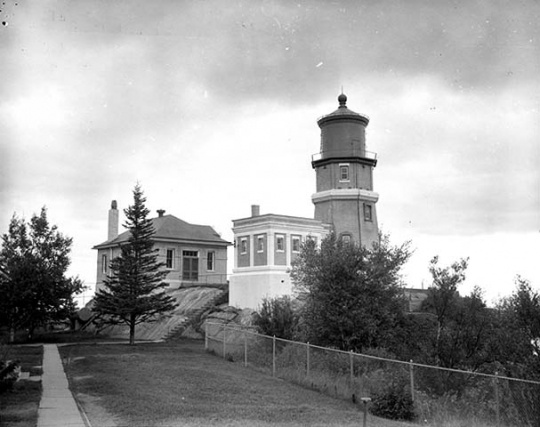
Split Rock Lighthouse
Holding Location
Articles
More Information
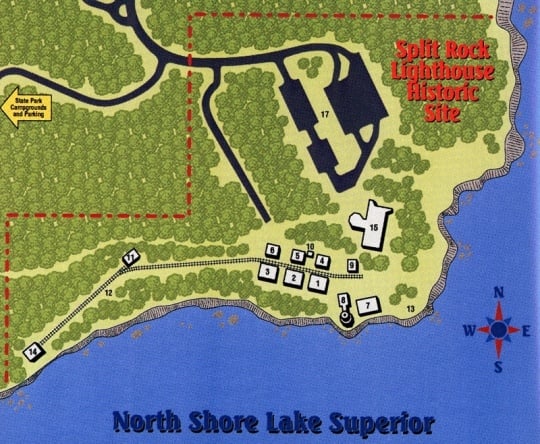
Map of Split Rock Station
Articles
More Information
Related Articles
Turning Point
In 1924, construction crews complete the Lake Superior International Highway along the North Shore. Visitation to Split Rock increases as tourists take advantage of the new route.
Chronology
1905
1907
1910
1924
1928
1933
1939
1940
1942
1961
1969
1975
1976
2010
2011
Bibliography
Hall, Stephen P. Split Rock: Epoch of a Lighthouse. Minnesota Historic Sites pamphlet series, no. 15. St. Paul: Minnesota Historical Society, 1978.
Related Resources
Primary
I.401
Split Rock Lighthouse Photograph Collection, c.1911–1945
Visual Collection, Minnesota Historical Society, St. Paul
Description: Photographs and copy prints taken by keeper Franklin J. Covell during his tenure at Split Rock Lighthouse.
M669
Split Rock Lighthouse Records, 1910–1967
Manuscript Collection, Minnesota Historical Society, St. Paul
Description: Records kept by Lighthouse keepers.
P1138-7
Tinkham, Ralph Russell. The Building of Split Rock Light Station, Minnesota. Typesrcipt, [1959].
Manuscript Collection, Minnesota Historical Society, St. Paul
Description: A brief typed report of the building of Split Rock Lighthouse.
Secondary
Architectural Resources Inc. A Master Plan for Split Rock Lighthouse Historic Site. St. Paul: Minnesota Historical Society, [1977?].
Berger, Todd R. Lighthouses of the Great Lakes: Your Guide to the Region's Historic Lighthouses. Stillwater, MN: Voyageur Press, 2010.
Dregni, Eric. Minnesota Marvels: Roadside Attractions in the Land of Lakes. Minneapolis: University of Minnesota Press, 2001.
Harrison, Tim, and Ray Jones. The Golden Age of American Lighthouses: A Nostalgic Look at U.S. Lights from 1850 to 1939. Lighthouse series. Guilford, CT: Globe Pequot Press, 2002.
Holland, Francis Ross Jr. America's Lighthouses: An Illustrated History. New York: Courier Dover Publications, 1988.
Hyde, Charles K. The Northern Lights: Lighthouses of the Upper Great Lakes. Detroit, MI: Wayne State University Press, 1995.
O'Hara, Megan. Lighthouse: Living in a Great Lakes Lighthouse, 1910 to 1940. Mankato, MN: Blue Earth Books, 1998.
Oleszewski, Wes. Great Lakes Lighthouses: American and Canadian. Gwinn, MI: Avery Color Studios, 2011.
Penrose, Laurie. A Traveler's Guide to 116 Western Great Lakes Lighthouses. Davison, MI: Friede Publications, 1995.
Roberts, Bruce, and Ray Jones. Western Great Lakes Lighthouses: Michigan and Superior. Old Saybrook, CT: Globe Pequot, 2001.
Roberts, Mike. The Last Keeper at Split Rock. St. Cloud, MN: North Star Press of St. Cloud Inc., 2010.
Sandvik, Glenn. A Superior Beacon: a Brief History of Split Rock Lighthouse. [Two Harbors, MN: Sandvik, 1972].
United States Coast Guard. Historically Famous Lighthouses. [Washington D.C.: U.S. Coastguard Public Information Division, 1972].
Videotape #B-74
Split Rock Light: Tribute to the Age of Steel. Fresh Pictures Inc. St. Paul: Minnesota Historical Society, 1986.
Web
Minnesota Historical Society. National Register, Split Rock Lighthouse.
http://www.mnhs.org/preserve/nrhp/NRDetails.cfm-NPSNum=69000073.html
Minnesota Historical Society. Split Rock Lighthouse, History.
http://sites.mnhs.org/historic-sites/split-rock-lighthouse/history













